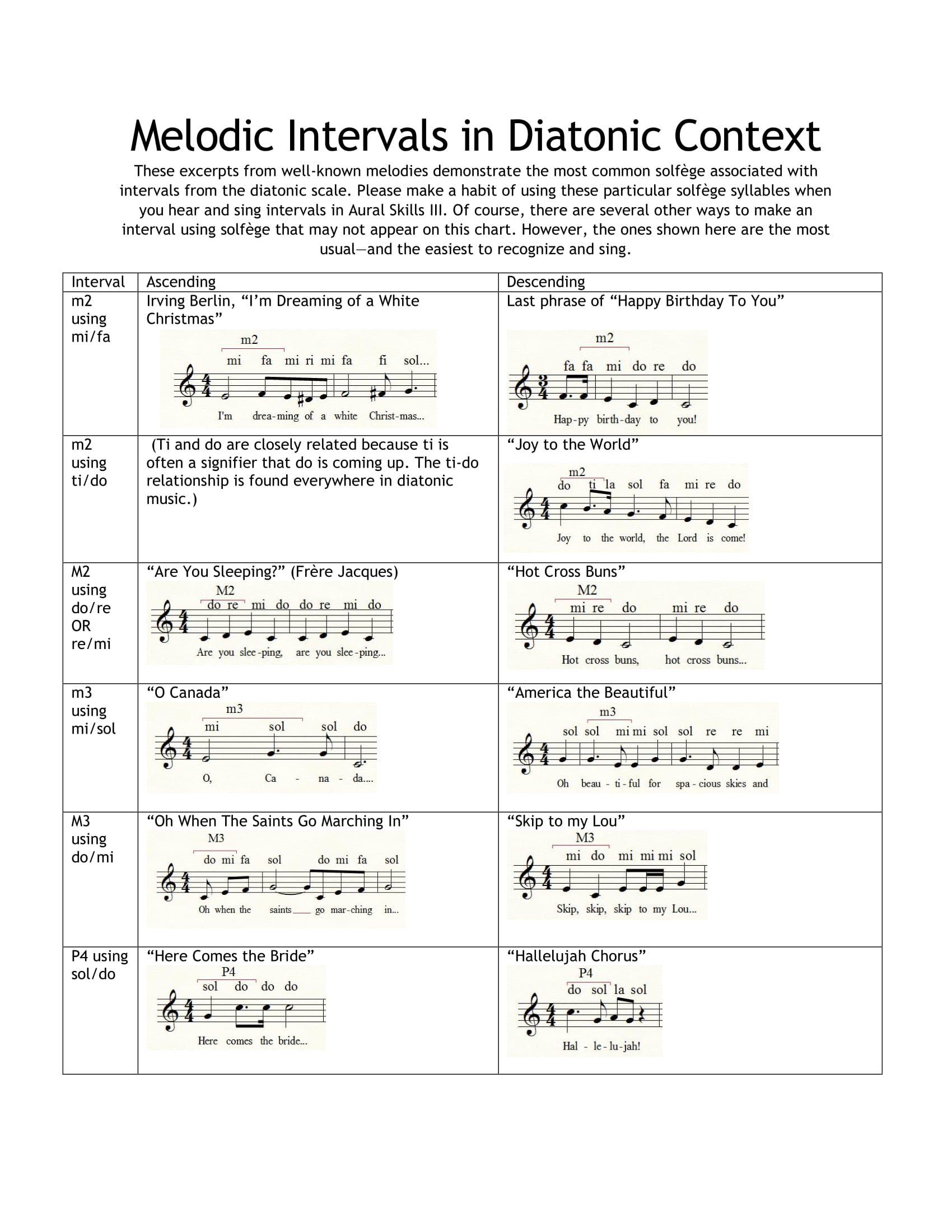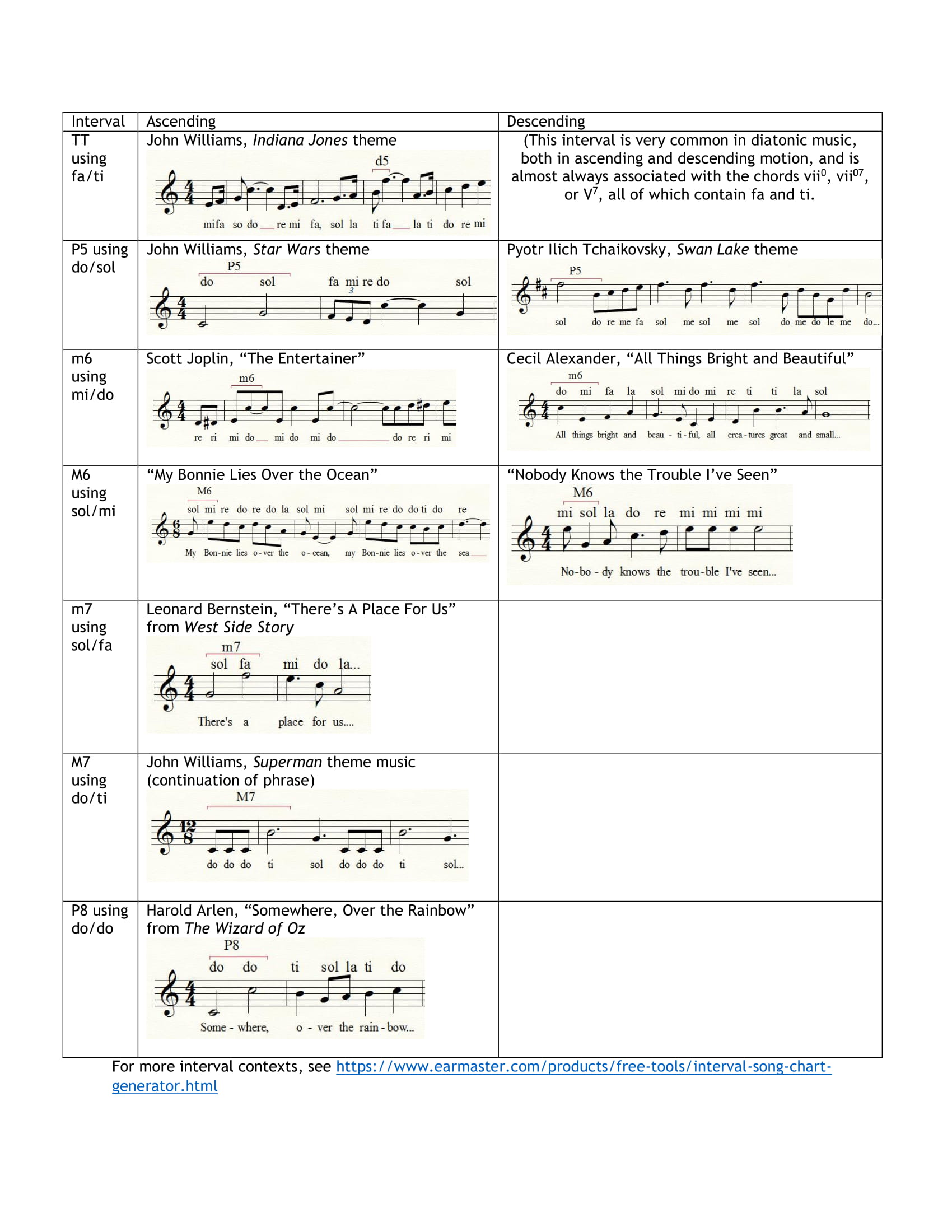Integrated Aural Skills 2019-20
Sight Singing - Simple Intervals, Ascending & Descending
Preparation for Unit 6 Sight Singing
Please click on the link below to access the sight singing assignment for next week. You must bring the assignment to your sight singing lesson. You may choose to print it out, or to view it on a laptop or tablet device. Please do not attempt to read the assignment from your phone in the lesson. This seldom results in a high score.
Sight Singing Instructions
Intervals Warm-Up It is not difficult to sing any simple interval in ascending or descending motion as long as you have a context-based method for doing so. For example, if you are asked to sing an ascending minor third, you will recognize this as the two upper notes of a major triad – mi and sol. Taking the given pitch as mi, you can create a major triad context yourself by audiating the opening of the American folk song “Skip to My Lou,” which begins on mi and outlines the major triad. So if you imagine yourself singing “Lou, Lou, skip to my Lou” the “My Lou” part of the phrase will give you mi and sol.
Some intervals may seem more difficult than others. Many learners find it difficult, for example, to articulate descending intervals. If you are asked to sing a descending major third, mi-do, you can use “Skip to My Lou” again (mi, do) or you can give yourself an intermediary step by inserting re, and audiating another well-known folk song, “Hot Cross Buns” (mi, re, do). Once you have confidently found do, you can remove the re and simply sing “mi, do.”
The charts below provide some suggestions of well-known songs that you can use as relatable intervallic contexts.


For more inspiration, check out the Spotify playlist “UI Aural Skills III Simple Intervals In Context” by user mirandawilson.
Rhythms in Compound Time
The definition of compound time is that the beat is divisible by three. This is why the numerator of compound time signatures refers to the divisions of the beat note rather than the number of beats in a measure. Remember that any time signature with a numerator of 6 is conducted in 2. By the same token, a numerator of 9 indicates that we should conduct in 3, and a numerator of 12 that we should conduct in 4.
The rhythmic exercises for next week’s sight singing lesson require you to familiarize yourself with some of the common divisions and subdivisions of the beat in compound time. For accuracy’s sake, practice with the metronome.